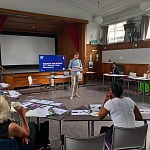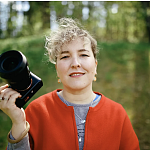Executive Summary Introduction
In March 2020, with COVID-19 declared a pandemic, charities and community groups, like other organisations, were thrown into reactionary business continuity planning. Digital quickly became the main delivery route for many to maintain services. This research report looks specifically at grassroots charities, community interest companies and voluntary groups – collectively referred to in the report using the sector acronym “VCOs” – voluntary and community organisations – and asks the question: how well have VCOs made the digital transition alongside staying financially afloat?
A second line of enquiry seeks to understand if there are common digital service delivery problems that aren’t being resolved by local VCOs or other stakeholders. If so, can the research provide a clear view of issues and shine a light on potential solutions that can be agreed by the sector, deployed locally, and then scaled up elsewhere? To deepen understanding of how local VCOs deliver in-person and digital services, as well as how they cooperate and local stakeholders, the research focuses on a narrow geographic area: the London Borough of Waltham Forest (LBWF).
LBWF has approximately 250 VCOs, serving an estimated 90,000 people, mostly children, about a third of the borough’s residents. The research comprised of detailed interviews, a standardised survey and a comparison of the local VCO experience to that of national charities and larger-scale organisations. Related, is the question of whether any of these national organisations are supporting local VCOs in LBWF or within other local authorities.
Executive Summary Findings
Impact: need has increased, but reach has fallen
Despite attempts to transition digitally, the majority of local VCOs in the research have been unable to reach as many of their service users during the pandemic as they did pre-covid. On average, service usage has fallen 43% – we estimate this impacts 39,000 individuals in LBWF, most being young people, many of whom are vulnerable.
This contrasts with a national picture of many larger charities quickly pivoting services to digital delivery and extending their overall reach. Reduced reach is set against a backdrop of greater social sector need due to isolation, insecurity and anxiety across all age groups due to the pandemic. In our modelling, we estimate a doubling of need means only 29% of LBWF residents are receiving VCO services that can make a difference to their life.
Regardless of the reduction in reach, the positivity, passion, commitment and creativity from each and every representative involved in the research must be celebrated. During the most challenging time in their history, there has been a very loud and powerful collective, ‘we can’ message. Organisations have never faltered with a dialogue suggesting that they just ‘couldn’t’ or that it was ‘too difficult’ to transition services. Despite the very real challenges of the virus, these Charities and CICs have balanced managing their businesses, with the additional well-being needs of staff and volunteers, as well as finding new ways to reach their users and offer an alternative programme against a backdrop of reduced resource, time and funding to do so. Read Driving with the brakes on – a recognition and celebration of tenacity and positivity in Waltham Forest for more.
Innovation and strategy: ‘Necessity is the mother of invention’
Necessity has seen unprecedented digital initiatives within local VCOs, such as on-demand videos, podcasts, online training/support resources, interactive workshops, digital storytelling, and content initiatives via social media and website platforms. The majority have targeted existing users, with a few serving new users. However, digital isn’t always the answer. Delivering what is powerful face to face, doesn’t always have the same impact digitally. Performing arts video conferencing in particular, suffers sound lag and quality issue.
Additionally, for some, service usage lacks the same engagement: ‘it’s just ‘not the same.’ is a regular complaint. Other less digitally engaged user groups present different challenges, such as ex-offenders and the elderly. The research found a mixed response to the quality of service enhancements, which contrasts with a more positive initial outcome to innovation within national charities. Unlike national charities, only a few local VCOs had planned technology roadmaps when the pandemic hit. The absence of this key strategic tool was a factor in hurried design and compromised implementation.
Internet poverty: the absence of hardware and data connectivity is debilitating
Digital exclusion in this research setting goes hand-in-hand with more widely recognised financial exclusion. Waltham Forest has a very high child poverty level, with Walthamstow now 9th worst in the UK.
Many families and individuals have not been able to access services at home as accessibility is limited to poor quality devices, typically mobile phones. Additionally, many families and young people lack access to reliable WiFi services, instead they have pay-as-you-go mobile phone contracts without the needed data allowances to access digital provision.
A few VCOs have tackled aspects of this shortfall with low-cost tablets, refurbished computers and corporate-sector help. This most basic building block of digital inclusion, that most of us take for granted, ranks highest in the digital needs survey.
Skills, experience and resource: common issues reveal a bigger picture of silo working and inefficiency
Discrete pockets of digital expertise exist locally with few organisations regularly using specialist service providers. Some VCOs access strategic partnerships well for technology and user support, but most lack the know-how for these relationships. Other support initiatives such as tech buddies and listing services offer signs of hope, but lack scale. Historic digital funding has mostly been inaccessible, although that’s significantly shifting at the time of writing.
The overall picture in LBWF is fragmented, incomplete and inefficient. The survey also hints at inexperience within local VCOs of what’s required for digital management and innovation. This shouldn’t be so surprising considering the speed of digital change and the lack of specialist technology resource and skills in local VCOs, given an average staff base of six and few formal trustees.
This contrasts with larger national charities, where reports such as the annual National Digital Skills Report for VCOs help inform best practice and facilitate collaboration and strategic partnerships, often with larger technology providers. There is little evidence of digital collaboration across local VCOs to pool expertise, improve delivery quality, meet target timescales and achieve cost efficiencies. The result is much slower progress, duplication of effort and inevitable repeating of each other’s mistakes.
Digital systems: definitions cloud major gaps in technology platforms
Safeguarding is a particular concern, which has meant some local VCOs have avoided transitioning online almost entirely. For others, the absence of detailed policies and control processes in this area is a risk they’re looking to address as they go along – or they’ve reduced scope to stay compliant.
For services delivered in-person, process management and user engagement can rely on human interaction and basic record keeping. The absence of robust customer relationship management (CRM) type systems in all but one organisation means processes such as online access control and contact management become much harder. Related is the task of monitoring and evaluating service delivery online (M&E). Here, few undertake the same level of online record keeping and outcome tracking that traditional offline services are subject to. The complexity of implementing new technology, and the skills gaps discussed previously, contribute to a sector-wide local problem of the de-prioritisation of back-end systems that are a necessary foundation for digital user engagement. A situation – and pain threshold – that larger organisations have mostly overcome.
Our interviews and survey responses identified inconsistencies in safeguarding and M&E, with survey responses scoring more highly than interviews and desk-top research would have suggested. We attribute this to a combination of terminology and VCO experience and believe the qualitative interview research is a more accurate reflection.
Digital funding and fundraising: prospects look poor for the majority
Grant funding that can be used at a VCO’s discretion for technology investment is generally not available, but seen by almost all local VCOs in the survey as important. Most funding remains programmatic and specific to service users. Information and guidance on how to access digital-only grants is not always obvious and so little accessed. Some VCOs with skilled bid writers are though ‘punching above their weight’ here, and accessing this finance.
As this research report has progressed, the landscape for digital funding has been moving fast, with multiple funders coming forward to support the sector. This may prove a double-edged sword, with proficient bid writers disproportionately securing emergency funds that are less needed, to the disadvantage of others working out their technology needs over a slightly longer timeframe, at which point technology-themed funding may have dried-up.
Digital individual giving/fundraising is not yet remotely developed in the borough and the absence of traditional giving is a major issue for the sector. Only one VCO has raised funds through digital channels – consequently, it’s now seen as a crucial area of digital service enhancement, an understandable response to a funding crisis.
Nationally and with larger organisations, unrestricted funding and digital grant funds also remain the exception, and part explains why half of larger charities still don’t possess clear technology strategies (National Charities Digital Skills Survey). Individual giving online is though far more evolved with larger charities, where the ask is more smartly integrated into multi-channel stakeholder engagement.

HELP AND ADVICE
Next Steps
Validation, building consensus and a business case
The next step is to validate the research findings with interviewees, local VCOs not in the original round of interviews and a broader stakeholder community including local political leaders and large-scale grant funders, foundations and philanthropists. With agreement on the issues, a deeper exploration of solutions can be explored, beginning with the recommendations in the research.
In parallel, further comparisons within other tightly defined geographic regions can be assessed. With consensus on a solution, a fledgling business case would be required to present the solution and finance requirements.
Funding for the next step: It’s estimated that the next phase of the project will take 12 weeks at a cost of £5,000.
Full Report
Have the digital solutions of small charities, charitable interest companies and community groups been effective in responding to Coronavirus? A grassroots study within Waltham Forest, a densely populated, diverse, urban environment.
Download the full report here
About the authors
Lyndsey Nassim is a marketer, brand consultant and champion of digital transformation within the charitable and commercial sectors. She’s a committed resident of Waltham Forest, with a passion for community engagement. More about Lyndsey
In mid-March 2020, with national lockdowns looming and the importance of this topic coming to the fore, this research was initiated by John Walker and CRATE St James Street, who have provided analysis and support throughout.
Acknowledgements
With thanks to the AD Charitable Trust for funding this research and St James Street Big Local, William Morris Big Local, Ding Digital, Waltham Forest Council and many others for in-kind assistance.
Most of all, thank you to the charities and community organisations at the heart of this research, who have innovated, adapted and continue to battle through the pandemic to meet the needs of the diverse community that is the residents of Waltham Forest.


















































